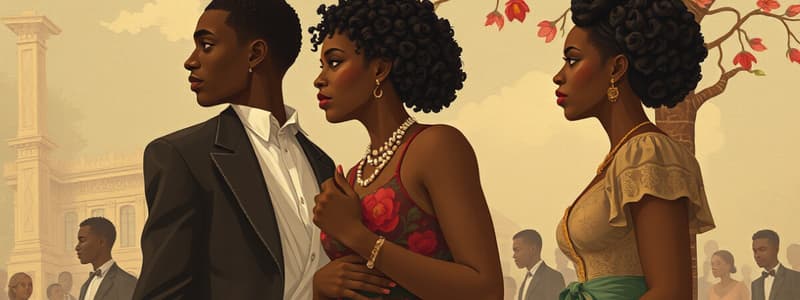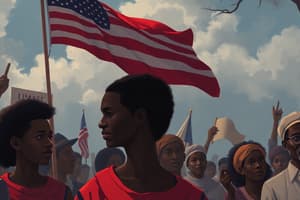Podcast
Questions and Answers
What was the primary goal of the Civil Rights Movement in the 1950s?
What was the primary goal of the Civil Rights Movement in the 1950s?
- To support the establishment of Black-owned businesses
- To end segregation and discrimination against Blacks (correct)
- To promote economic growth within Black communities
- To gain political representation for Black Americans
Which of the following events is associated with the Civil Rights Movement?
Which of the following events is associated with the Civil Rights Movement?
- The Economic Recovery Act
- The Women's Suffrage Movement
- The March on Washington (correct)
- The Voting Rights Act of 1965
What challenges did activists face during the Civil Rights Movement?
What challenges did activists face during the Civil Rights Movement?
- Oppression and suppression from the government (correct)
- Financial backing from private organizations
- Support from all government officials
- Lack of interest from the public
What was the outcome of the Civil Rights Movement in relation to law creation?
What was the outcome of the Civil Rights Movement in relation to law creation?
Which of the following groups is associated with the Civil Rights Movement?
Which of the following groups is associated with the Civil Rights Movement?
Flashcards are hidden until you start studying
Study Notes
Overview of the Civil Rights Movement
- Aimed to end segregation and discrimination against Black Americans in the 1950s.
- Advocated for equal rights and freedoms for Black individuals.
Key Events
- Brown v. Board of Education: Landmark Supreme Court ruling that declared racial segregation in public schools unconstitutional.
- Little Rock Nine: Group of nine Black students who integrated Central High School in Little Rock, Arkansas, facing significant resistance and hostility.
- Montgomery Bus Boycott: A pivotal protest against segregated buses initiated by Rosa Parks' arrest, leading to a year-long boycott.
- Freedom Riders: Activists who rode interstate buses into the segregated southern United States to challenge non-enforcement of desegregation laws.
- March on Washington: A massive demonstration in 1963 where Martin Luther King Jr. delivered his famous "I Have a Dream" speech, advocating for civil and economic rights.
Achievements
- Contributed to the establishment of legislation promoting equality and dismantling discriminatory practices, particularly segregation.
Challenges Faced
- Encountered severe oppression from the government and law enforcement.
- Suffered violence, threats, and harassment; over ten prominent leaders were assassinated or murdered.
- Faced significant funding shortages, impacting effectiveness and outreach.
Impact of the Movement
- Played a crucial role in promoting equality and decreasing racial discrimination in American society.
- Laid the groundwork for future civil rights advocacy and legislation.
Studying That Suits You
Use AI to generate personalized quizzes and flashcards to suit your learning preferences.




